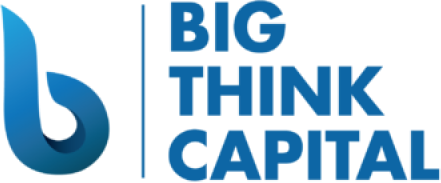The Impact of Fed Interest-Rate Decisions on Alternative Lending Options for Small Businesses
Estimated reading time: 5 minutes
- Understand the relationship between Fed interest rates and small business financing.
- Evaluate various alternative lending options and their implications.
- Manage business credit scores effectively amidst changing economic conditions.
- Secure reliable funding sources during economic uncertainty.
- Implement practical takeaways to optimize financing strategies.
- Unraveling Fed Interest-Rate Decisions and Their Impact on Small Business Financing
- Pros and Cons of Different Alternative Lending Options in Light of Fluctuating Interest Rates
- Tips for Managing Business Credit Scores Amidst Changing Loan Conditions
- How to Secure Reliable Funding Sources and Maintain Healthy Bank Relationships in Times of Economic Uncertainties
- Practical Takeaways for Business Owners Exploring Financing
- Conclusion
- FAQ
Unraveling Fed Interest-Rate Decisions and Their Impact on Small Business Financing
The Federal Reserve’s decisions regarding interest rates are primarily aimed at controlling inflation and stabilizing the economy. When the Fed raises rates, the cost of borrowing increases, impacting various forms of financing, including:
- Working Capital Advances: These short-term financing solutions are often linked to the prime rate, meaning higher Fed rates can push costs up. Businesses may find their repayments swelled due to increased interest obligations.
- SBA Loans: Rates for SBA loans may also rise, although these loans usually come with favorable terms. Higher rates could impact the borrowing limits or repayment schedules for potential applicants.
- Merchant Cash Advances (MCA): MCAs often carry higher inherent costs as they are assessed based on future revenue projections. An increase in interest rates can further escalate costs for businesses relying on this form of finance.
Understanding the relationship between Fed policies and interest rates is crucial for business owners to navigate borrowing landscapes effectively. For further details on Fed interest rate decisions, you can refer to the Federal Reserve’s official website here.
Pros and Cons of Different Alternative Lending Options in Light of Fluctuating Interest Rates
As interest rates continue to fluctuate, choosing the right financing option becomes increasingly complicated. Here’s a breakdown of the major alternative lending options available, along with their pros and cons.
Working Capital Advances
- Pros:
- Quick funding without extensive paperwork.
- Ideal for immediate cash needs, such as inventory purchases or unexpected expenses.
- Flexible repayment options based on sales performance.
- Cons:
- Higher interest rates compared to traditional loans.
- Potential for escalating debt if cash flow does not sustain repayments.
SBA Loans
- Pros:
- Lower interest rates and longer repayment terms, making them attractive for larger funding needs.
- Government backing reduces lender risk, making approval more likely for small businesses.
- Cons:
- Lengthy application process and stringent eligibility criteria.
- May require collateral, which not all businesses can provide.
Merchant Cash Advances (MCA)
- Pros:
- Fast access to cash based on future sales projections.
- Less stringent credit requirements compared to traditional financing.
- Cons:
- Higher costs and fees, leading to potential debt cycles.
- Daily or weekly repayment may strain cash flow, especially during slow sales periods.
Tips for Managing Business Credit Scores Amidst Changing Loan Conditions
As economic conditions fluctuate, maintaining a healthy business credit score is vital for securing funding. Here are some practical tips to help you manage your credit score effectively:
- Pay Bills on Time: Timely payment of bills is one of the most significant factors influencing your credit score. Set reminders to ensure that none of your payments are late.
- Keep Credit Utilization Low: It’s recommended to utilize no more than 30% of your available credit limit. This not only keeps your score high but also gives you flexibility for future financing needs.
- Build Relationships with Lenders: Establishing relationships with your lenders can provide advantages in times of economic uncertainty. Communicate regularly with your lending institution to stay aligned on your financial goals.
- Regularly Check Your Credit Report: Keeping an eye on your credit report allows you to catch errors or fraudulent activities early. You can check your business credit report for free through services like Nav or Experian.
How to Secure Reliable Funding Sources and Maintain Healthy Bank Relationships in Times of Economic Uncertainties
Finding reliable funding sources becomes essential during times of economic uncertainty. Here are strategies to help you secure funding and maintain a positive relationship with banks and financial institutions:
- Diversify Your Funding Sources: Don’t rely solely on one type of financing. Explore alternatives such as working capital advances, SBA loans, and MCAs. This ensures that if one option becomes less favorable due to rising interest rates, you have others to fall back on.
- Maintain Open Communication: Regular dialogue with your bank or financial institution can turn an uncertain situation into an advantageous one. Discuss your financial health and any cash flow challenges proactively.
- Prepare Detailed Documentation: When seeking financing, providing detailed financial projections, business plans, and past performance data can increase your credibility and the likelihood of securing funding.
- Leverage Technology: Consider utilizing financial management software that can help you maintain accurate records and provide insights into your cash flow, assisting in better decision-making regarding financing.
Practical Takeaways for Business Owners Exploring Financing
To sum up the insights provided in this blog post, here are three practical takeaways for navigating alternative lending options amidst fluctuating interest rates:
- Stay Informed: Track the Federal Reserve’s interest rate decisions and understand their implications on your current and future financing options.
- Evaluate Your Financing Needs: Assess which lending option aligns best with your business model and financial health. Understand the cost implications before committing.
- Focus on Credit Health: Actively manage your business credit score by paying bills on time, minimizing debt, and maintaining good relationships with lenders.
Conclusion
As a small business owner, being equipped with the right knowledge and strategies regarding interest rate fluctuations will empower you to make informed decisions about your financing options. At Big Think Capital, we are dedicated to helping small businesses thrive by providing tailored funding solutions suited to your needs. Whether you are considering a working capital advance, SBA loan, or a merchant cash advance, we remain committed to finding the right path for your business growth.
For more expert insights or to learn more about securing the most appropriate funding for your business, visit us at bigthinkcapital.com or speak with one of our funding experts today. Your success is our priority, and we are here to support your journey towards financial health and growth.
FAQ
What is the impact of the Federal Reserve’s interest rate decisions on small businesses?
The Federal Reserve’s interest rate decisions directly affect the cost of borrowing for small businesses, impacting various financing options such as working capital advances and SBA loans.
How can small businesses manage their credit scores effectively?
Small businesses can manage their credit scores by paying bills on time, keeping credit utilization low, building relationships with lenders, and regularly checking their credit report for accuracy.
What are the advantages of seeking multiple funding sources?
Diversifying funding sources helps businesses minimize risk during economic uncertainty and ensures access to the necessary capital when needed.






